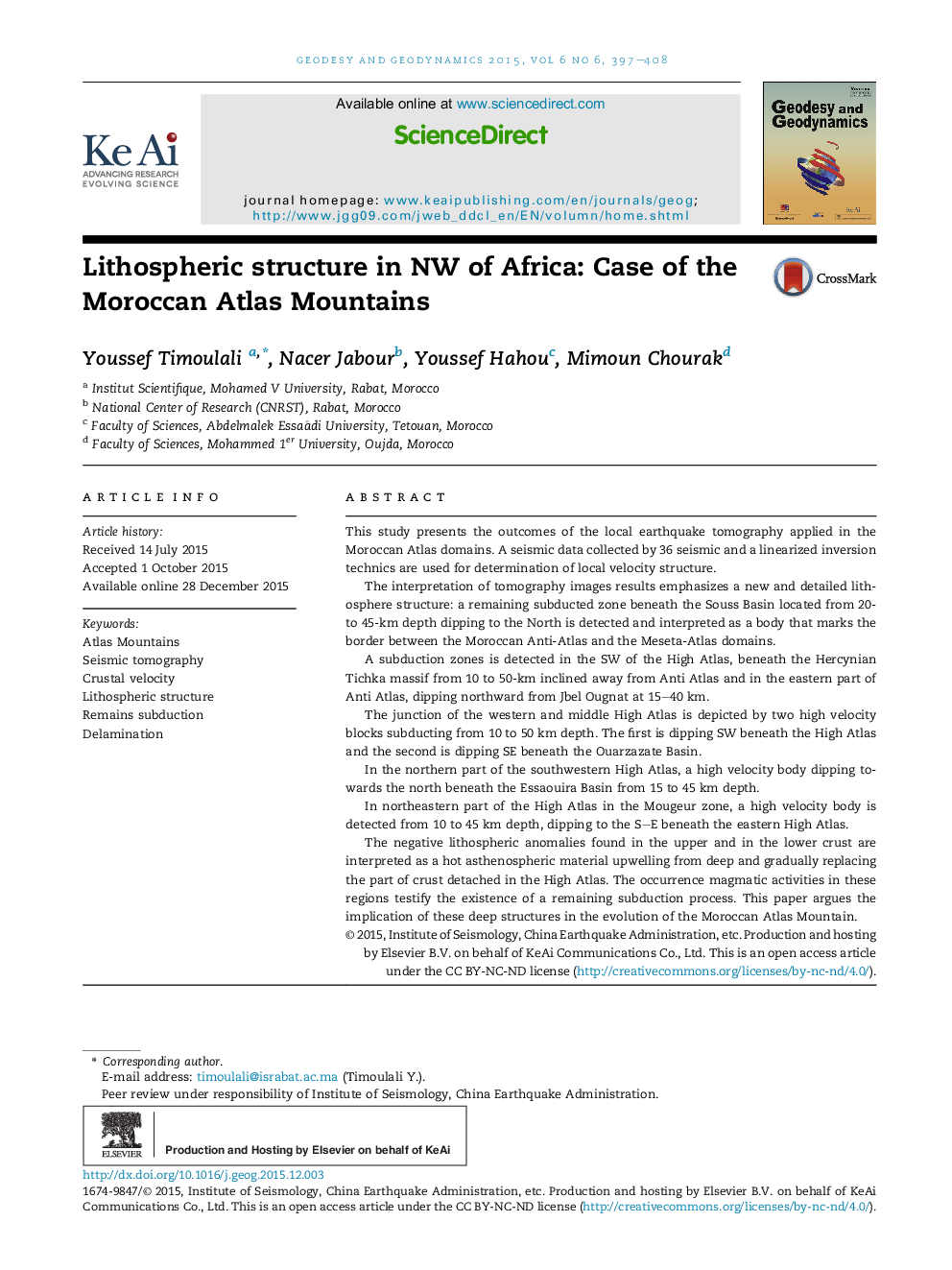| Article ID | Journal | Published Year | Pages | File Type |
|---|---|---|---|---|
| 4683597 | Geodesy and Geodynamics | 2015 | 12 Pages |
This study presents the outcomes of the local earthquake tomography applied in the Moroccan Atlas domains. A seismic data collected by 36 seismic and a linearized inversion technics are used for determination of local velocity structure.The interpretation of tomography images results emphasizes a new and detailed lithosphere structure: a remaining subducted zone beneath the Souss Basin located from 20- to 45-km depth dipping to the North is detected and interpreted as a body that marks the border between the Moroccan Anti-Atlas and the Meseta-Atlas domains.A subduction zones is detected in the SW of the High Atlas, beneath the Hercynian Tichka massif from 10 to 50-km inclined away from Anti Atlas and in the eastern part of Anti Atlas, dipping northward from Jbel Ougnat at 15–40 km.The junction of the western and middle High Atlas is depicted by two high velocity blocks subducting from 10 to 50 km depth. The first is dipping SW beneath the High Atlas and the second is dipping SE beneath the Ouarzazate Basin.In the northern part of the southwestern High Atlas, a high velocity body dipping towards the north beneath the Essaouira Basin from 15 to 45 km depth.In northeastern part of the High Atlas in the Mougeur zone, a high velocity body is detected from 10 to 45 km depth, dipping to the S–E beneath the eastern High Atlas.The negative lithospheric anomalies found in the upper and in the lower crust are interpreted as a hot asthenospheric material upwelling from deep and gradually replacing the part of crust detached in the High Atlas. The occurrence magmatic activities in these regions testify the existence of a remaining subduction process. This paper argues the implication of these deep structures in the evolution of the Moroccan Atlas Mountain.
